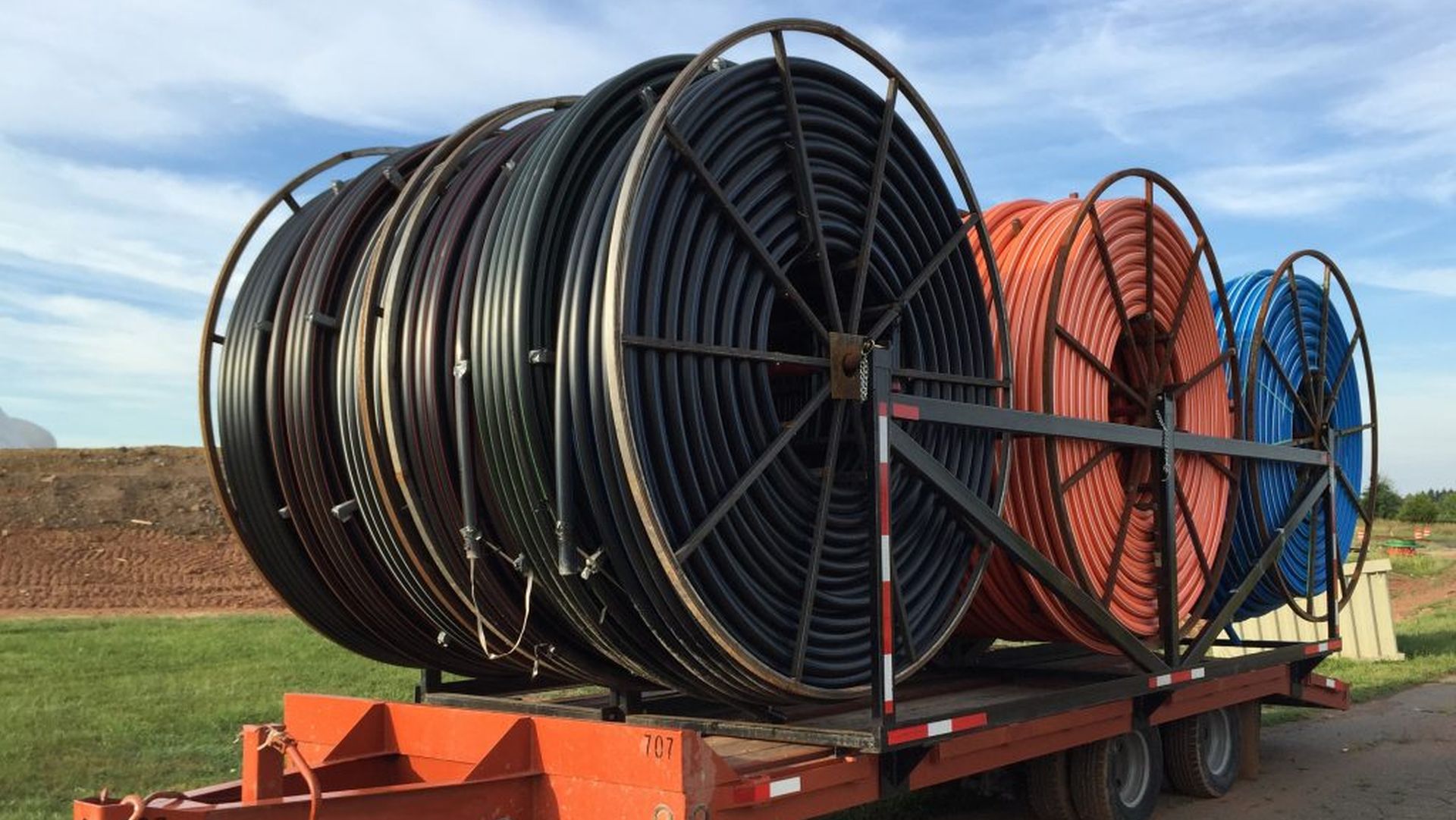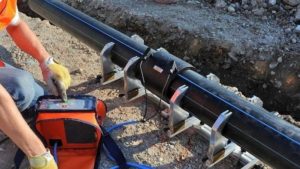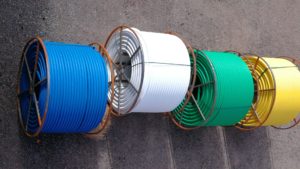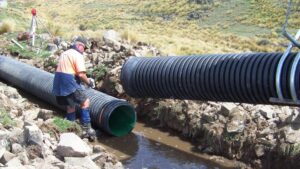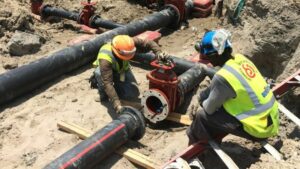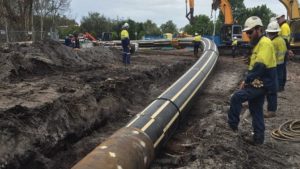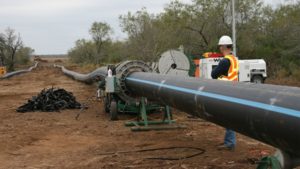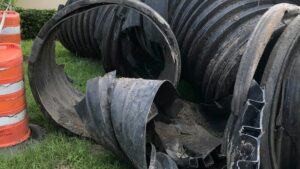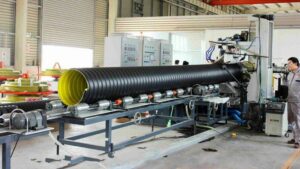Unloading and handling equipment must be appropriate for the type of packaging, must be in safe operating condition, and must have sufficient capacity (load rating) to safely lift and move the product as packaged.
Equipment operators should be trained and preferably, certified to operate the equipment. Safe handling and operating procedures must be observed.
Although PE piping components are lightweight compared to similar components made of metal, concrete, clay, or other materials, larger components can be heavy. Lifting and handling equipment must have adequate rated capacity to safely lift and move components.
Equipment that lifts from the bottom of the load such as a forklift, or from above the load such as a crane, a side boom tractor, or an extension boom crane is used for unloading.
Above the load lifting equipment may employ slings or slings and spreader bars to lift the load. When using a forklift, or forklift attachments on equipment such as articulated loaders or bucket loaders, lifting capacity must be adequate at the load center on the forks.
Forklift equipment is rated for a maximum lifting capacity at a distance from the back of the forks. If the weight-center of the load is farther out on the forks, lifting capacity is reduced.
Before lifting or transporting the load, forks should be spread as wide apart as practical, forks should extend completely under the load using fork extensions if necessary, and the load should be as far back on the forks as possible.
During transport, a load on forks that are too short or too close together, or a load too far out on the forks, may become unstable and pitch forward or to the side, and result in damage to the load or property, or hazards to persons.
Above the load lifting equipment such as cranes, extension boom cranes, and side boom tractors, should be hooked to wide fabric choker slings that are secured round the load or to lifting lugs on the component.
Wire rope slings and chains can damage components, can slip, and should not be used. Spreader bars should be used when lifting pipe or components longer than 20’. Before use, inspect slings and lifting equipment. Equipment with wear or damage that impairs function or load capacity should not be used.
Unloading Site
A suitable unloading site will be generally level and large enough for the carrier’s truck, handling equipment and its movement, and for temporary load storage.
Unloading Bulk Packaged Pipe, Fittings and Fabrications
Silo packs and other palletized packages should be unloaded from the side or end with a forklift. Non-palletized pipe, fittings, fabrications, manholes, tanks, or other components should be unloaded from above with suitable lifting equipment and wide fabric slings, or from the side with a forklift.
Pipe, fittings, fabrications, tanks, manholes, and other components must not be pushed or rolled or dumped off the truck, or dropped.
Unloading Large Fabrications, Manholes and Tanks
Large fabrications, manholes and tanks should be unloaded using a wide web choker sling and lifting equipment such as an extension boom crane, crane, or lifting boom. The choker sling is fitted around the manhole riser or near the top of the tank. Do not use stub outs, outlets, or fittings as lifting points, and avoid placing slings where they will bear against outlets or fittings.
Larger diameter manholes and tanks are typically fitted with lifting lugs. All lifting lugs must be used. The weight of the manhole or tank is properly supported only when all lugs are used for lifting. Do not lift tanks or manholes containing liquids. Read Full PDF

